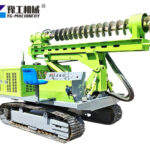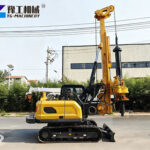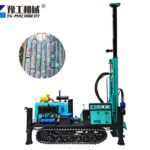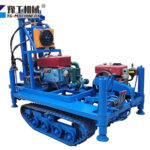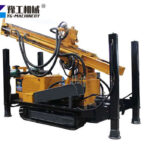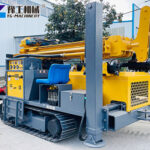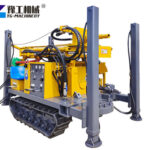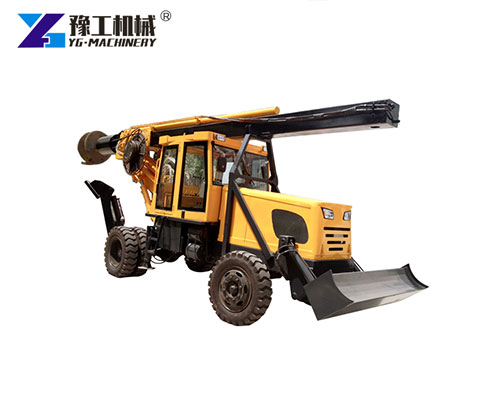
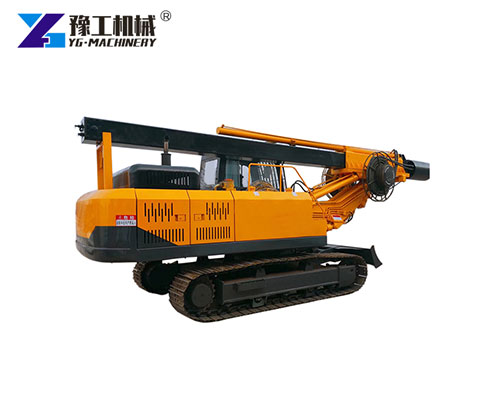
The rotary drilling rig is an essential machine used in foundation construction to bore deep holes into the ground. Its rotating drill bit, powered by a robust drive system, penetrates soil and rock efficiently, making it ideal for creating pile foundations, boreholes, and other structural supports. Whether you’re working on bridges, skyscrapers, or wind farms, a rotary drilling rig provides the strength and accuracy required for dependable groundwork. WhatsApp/WeChat/Phone: 86 138 3715 9132
Rotary Drilling Rig Parameter
| Dimensions (mm) | 7900*2260*3100 |
| Vehicle mass (kg) | 8000 |
| Wheelbase (mm) | 3150 |
| Wheelbase (mm) | Front 1400 After 1060 |
| Drilling depth (m) | 13 |
| Drilling diameter (mm) | 600-1600 |
| Rotation angle | 180 degree |
| Walking speed (km/h) | 50 |
| Gear pump model | CBJT2080 |
| Hydraulic system working pressure (MPa) | 20-25 |
| Hydraulic system displacement (ml/r) | 80 |
| engine model | 4108 |
| Engine power (kW) | 88 |
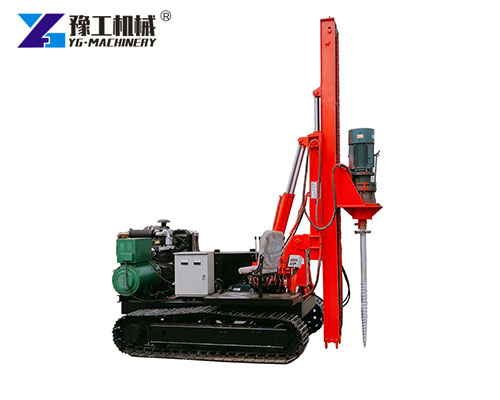
Basic Components of a Rotary Drilling Machine
Understanding the key components of a rotary drilling machine helps operators use it more effectively and maintain long-term performance. These components include:
- Drill Mast: Supports the drilling tools and aligns the drilling operation vertically.
- Rotary Drive: Provides the torque to rotate the drilling tool.
- Kelly Bar: A telescopic pipe that transmits torque from the drive to the drill bit.
- Casing System: Used to stabilize the borehole and prevent wall collapse in loose soils.
- Crowd Mechanism: Applies downward force on the drill bit for deeper penetration.
- Undercarriage: Provides mobility, usually with crawler tracks for stable movement on rough terrain.
- Hydraulic System: Powers the entire machine, from lifting mechanisms to rotary drives.
These components work together to ensure smooth and efficient drilling operations on diverse terrains.

How a Rotary Drilling Rig Works
The rotary drilling rig operates by rotating a drill bit into the ground while applying downward force. The process involves:
- Positioning the Rig: The rig is stabilized at the drilling location.
- Lowering the Kelly Bar: The telescopic bar extends downward with the drilling tool.
- Rotating and Drilling: The rotary drive spins the drill bit, breaking up soil and rock.
- Removing Excavated Material: Augers or buckets bring the cuttings to the surface.
- Reinforcing the Hole: Steel casing may be inserted if needed.
- Concreting (Optional): For foundation piles, concrete is poured into the drilled shaft.
This method allows for deep, vertical holes in a wide variety of soil conditions.
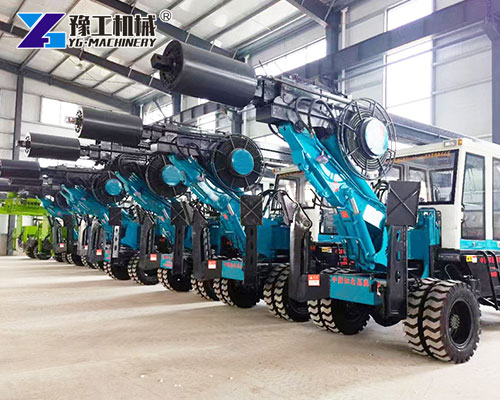
Types of Rotary Drilling Machine
Choosing the right type of rotary drilling rig machine depends on the project’s depth, terrain, and material type. Common types include:
- Crawler Rotary Drilling Rigs: Mounted on crawler tracks for excellent mobility and stability.
- Truck-Mounted Rigs: Offer easy transport between sites and faster setup.
- Hydraulic Rotary Rigs: Use advanced hydraulics for greater control and drilling force.
- Mini Rotary Rigs: Designed for smaller construction or tight-space jobs.
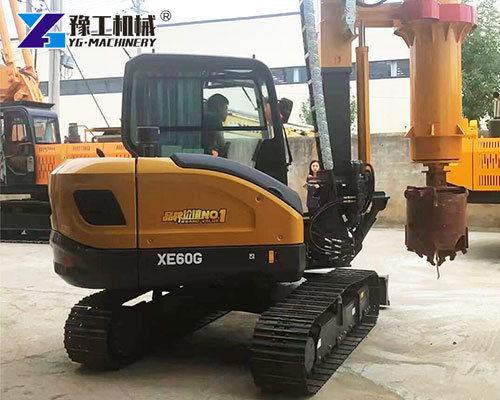
Key Features of a Rotary Drilling Rig
Modern rotary drilling rigs are designed with technology and operator convenience in mind. Key features include:
- High-Torque Rotary Heads: Deliver consistent power for drilling through rock and dense soil.
- Advanced Monitoring Systems: Real-time feedback helps ensure precision and safety.
- Automatic Drilling Depth Control: Prevents overdrilling and ensures uniformity.
- Fuel-Efficient Engines: Lower operational costs and reduce environmental impact.
- Quick Assembly and Disassembly: Speeds up transitions between jobsites.
These features enhance productivity while minimizing errors and downtime.
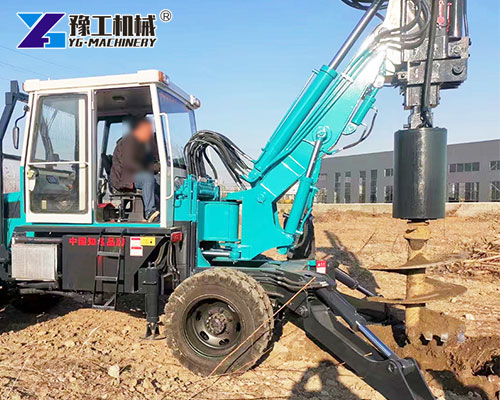
Applications of Rotary Drilling Machine
- Pile Foundation Drilling: Essential for bridges, high-rises, and industrial structures.
- Wind Farm Installations: Ensures firm foundations for turbines.
- Marine and Dock Projects: Used to drill into seabeds for piers and offshore platforms.
- Water Well Drilling: Suitable for large-diameter, deep water wells.
- Slope Stabilization: Drills anchors or piles for landslide prevention.

Advantages of Using a Rotary Drilling Rig
- High Efficiency: Capable of drilling deep holes quickly with minimal effort.
- Precision: Ensures exact drilling depths and vertical alignment.
- Versatility: Performs well in soft, mixed, or rocky soils.
- Reduced Labor Costs: Automation minimizes the need for manual labor.
- Improved Safety: Designed with operator protection systems and stable controls.
Rotary Drilling Rig Manufacturer: YG Machinery
YG offers a diverse lineup of reliable, high-performance rotary drilling machines engineered for durability and adaptability. Our commitment to quality is unwavering, as evidenced by our ISO-certified manufacturing processes that ensure strict quality control at every stage. We go the extra mile by providing custom-built machines tailored to your specific project requirements, all at competitive prices that don’t compromise performance. To top it off, our expert after-sales support and technical assistance guarantee that you’ll have a seamless experience with your Rotary Drilling Rig for years to come. WhatsApp/WeChat/Phone: 86 138 3715 9132


